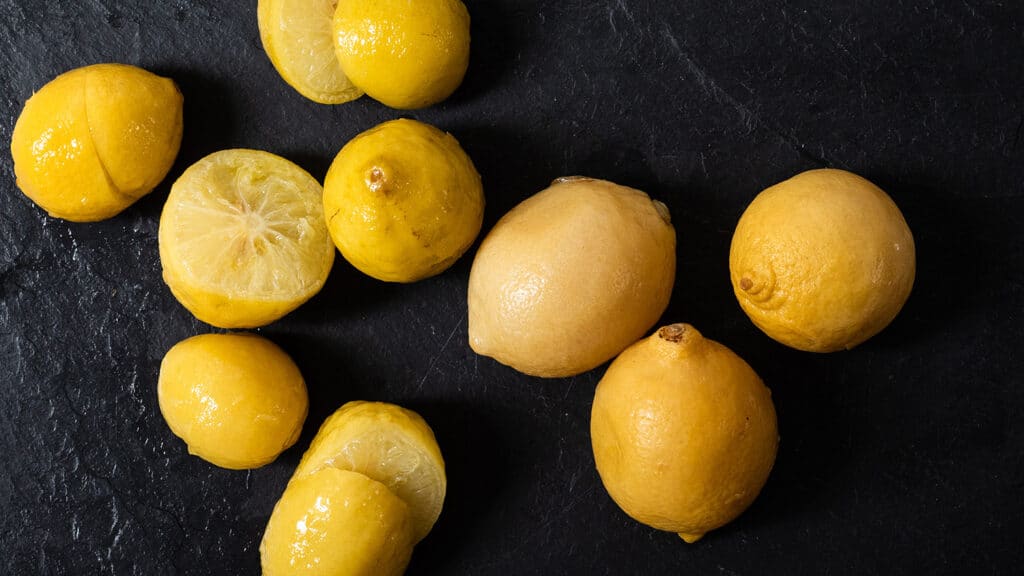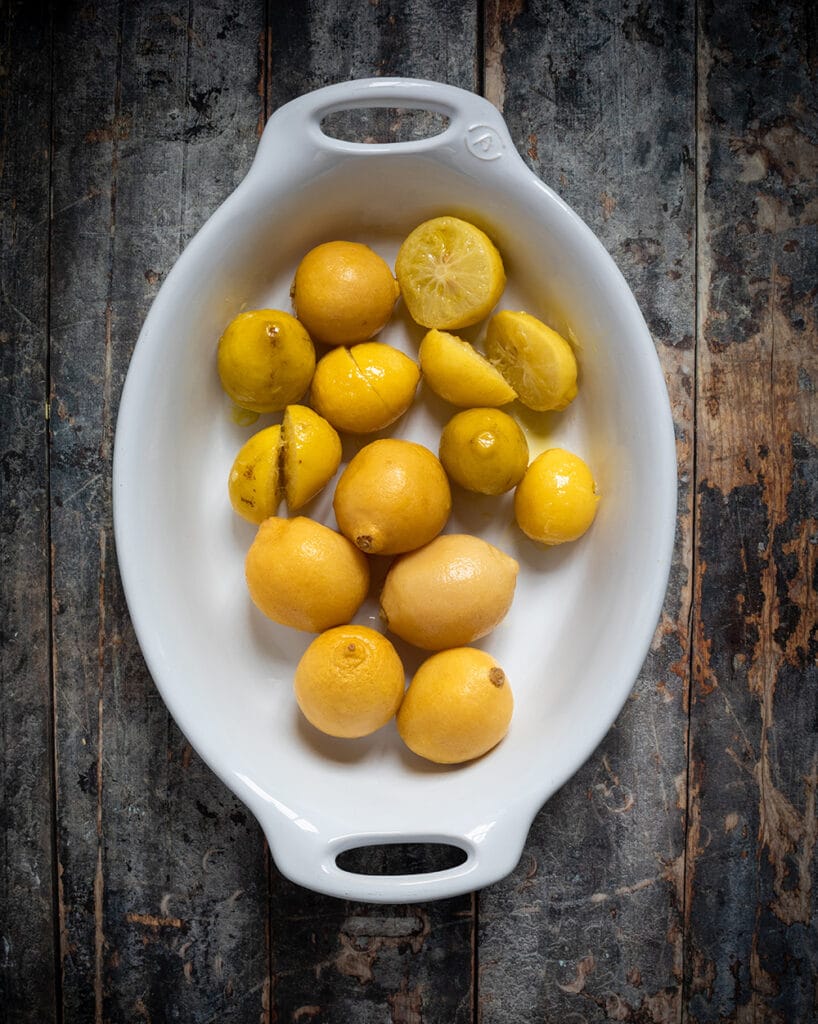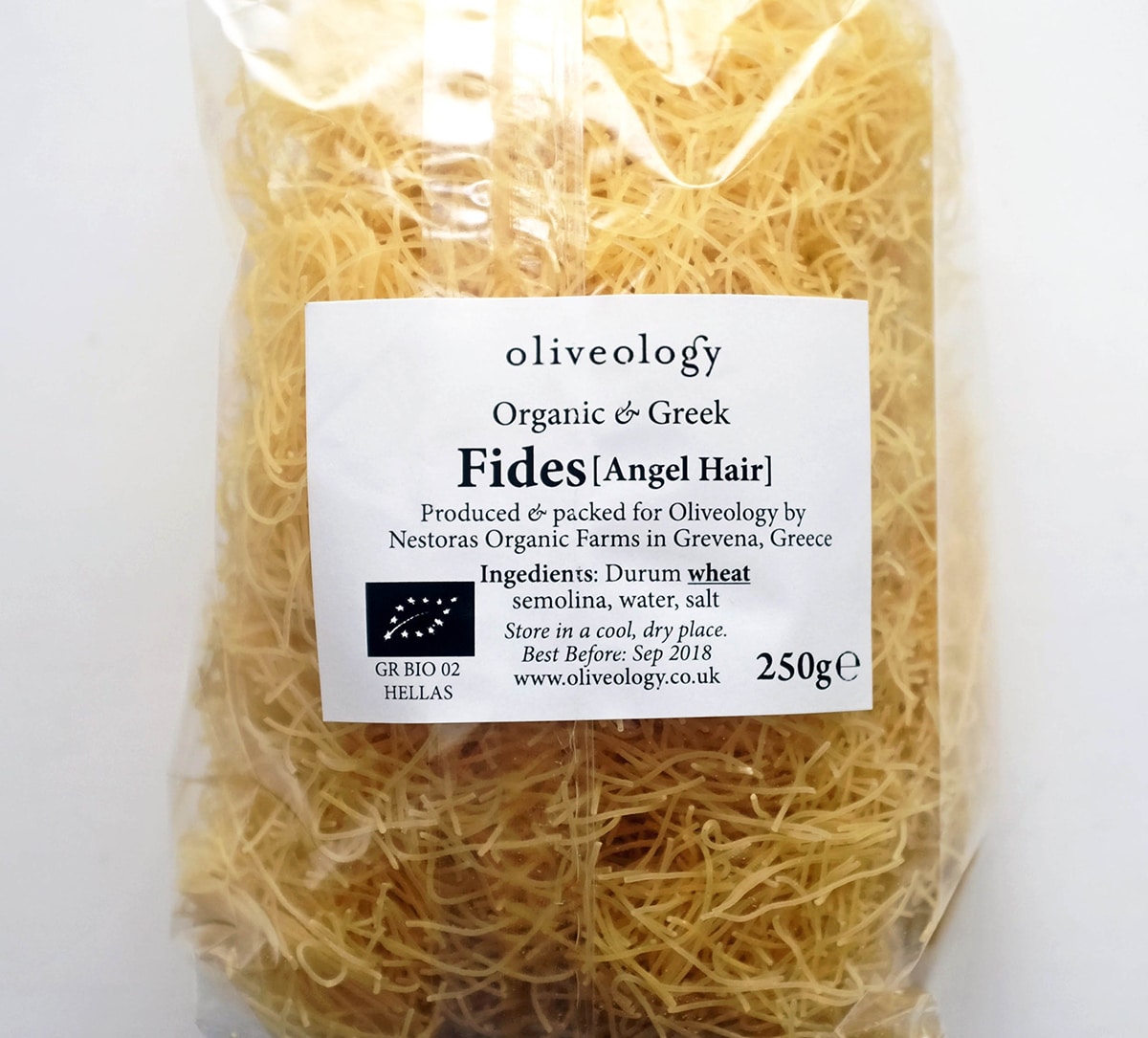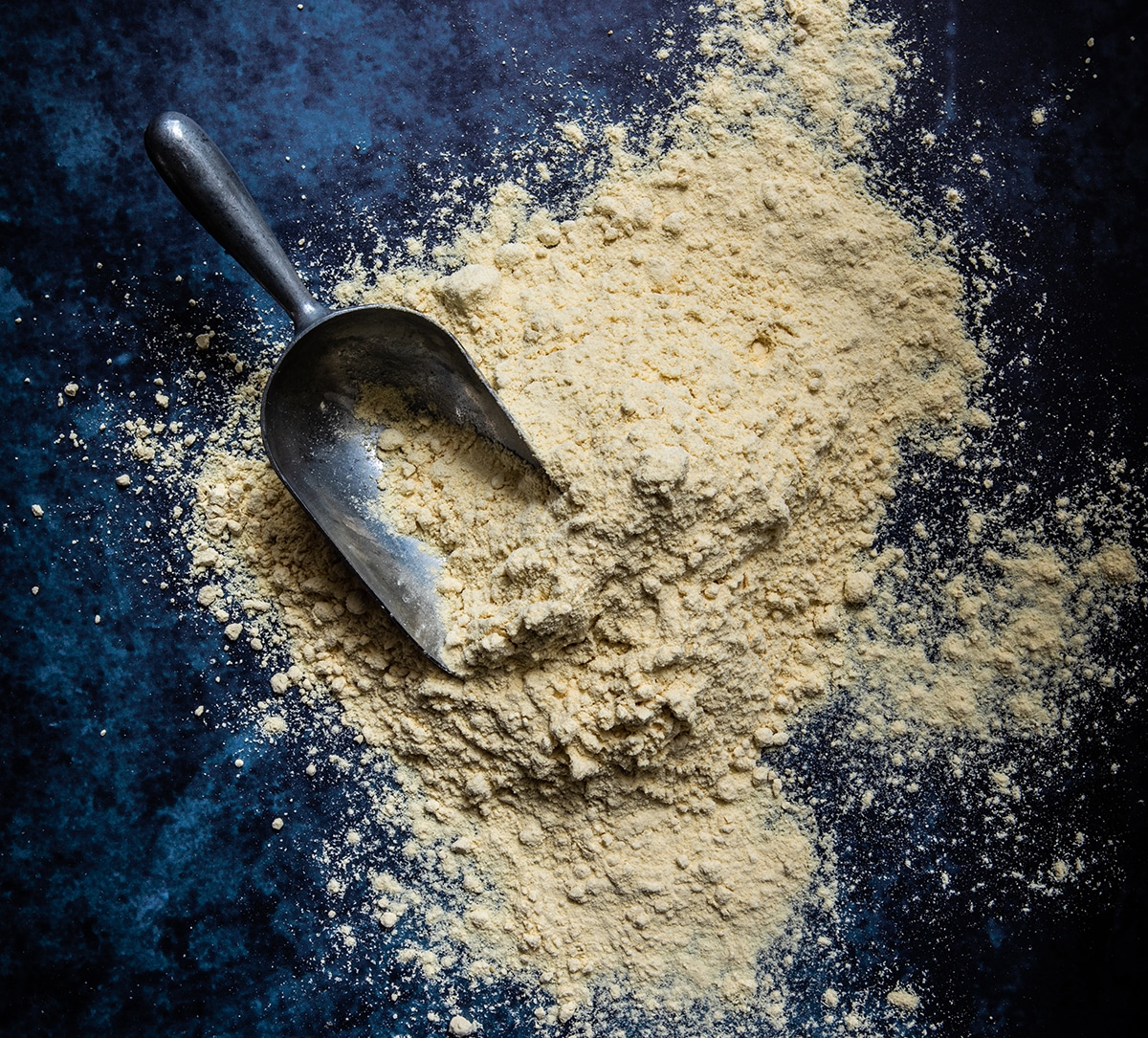Cupboard love: preserved lemons
Ed Smith explores the essential components of his kitchen cupboard. This time: preserved lemons


“FOR THE FIRST TWO TO THREE WEEKS, THE SALTED LEMONS WILL HAVE BEEN LEFT SOMEWHERE WARM TO GENTLY FERMENT”
Images: Regula Ysewijn
When life gives us lemons, we should make lemonade. But what if those lemons have been salted?
Preserved lemons have become a relatively common sight in British cupboards and fridges as our exposure to and interest in north African food has increased. Let’s call it the Roden-Henry-Ottolenghi-Ghayour effect. That said, I bet for many of us the common sight is of a mostly full jar, untouched for several months since being unsealed for a specific recipe, and another unopened jar in the cupboard, purchased because you forgot about the open one in the fridge.
This ingredient is exactly what the name says: the result of a centuries-old process of preserving lemons through salting, for the dual benefit of avoiding the wastage of a glut and harnessing a flavour until long after the harvest is over.
They’re not simply salty, though. For the first two to three weeks after being packed into a jar, the salted lemons will have been left somewhere warm to gently ferment. In addition to making the fruit less hospitable to spoiling bacteria, this process breaks down the sugars, starches and citric acid, which is why the resulting flavour characteristics are floral and, well, lemony, as opposed to being intensely acidic and sweetly tart as fresh lemons are. Over time they also seem to develop umami – ‘the fifth taste’ – which is why preserved lemons are often described as adding ‘depth’ to recipes.

Many recipes for making preserved lemons will call for the fruits to be cut into wedges or slices, or for slits to be made and those openings to be packed with salt. For me, when the flesh has been exposed, the end product is too salty, too soapy, and some of the supposed ‘lemony flavour’ is obscured. I wonder if this particular method was developed in response to the specific fruits used, European lemons being particularly large with a thick layer of pith. I think the more interesting and indeed more palatable preserved lemons are still whole, made from fairly small and thin-skinned fruit. The Moroccan variety stocked by Fitz Fine Foods is a good example, and Arabica’s baby Egyptian lemons are even cuter (as the name suggests).
Anyway, back to how to use them. It hardly needs to be said that preserved lemons are a vital flavouring in many north African and Middle Eastern-inspired tagines, stews and tray bakes. Perhaps the main thing worth noting in this context is that the lemons can be used in different ways to different effect – try, for example, seasoning a dish by just popping a lemon in whole (as you might a stick of cinnamon or bay leaf), rather than slicing or dicing. If you’ve also got a rogue bunch of coriander to hand, consider harnessing the two bold flavours, along with garlic and chilli, to create a marinade known as chermoula. It’s particularly good with fish. Again, though, perhaps this north African relish was the reason you bought that underused jar to begin with.
For more spontaneous moments, you can use preserved lemons in many of the situations that you might consider adding a little fresh zest and juice. Scrape out the flesh and chop up the pith before stirring the lemons into lentils, couscous, barley, spelt or wheatberries; add dices or slices to mixes of minced lamb or spinach and feta and stuff into a filo-shrouded parcel or pie; use as the aromatic base for a herby sauce or salsa to embellish chicken, beef, white fish or fresh cheeses like burrata, soft goat’s cheese and baked ricotta.
Preserved lemon immediately transports familiar accompaniments to an exotic place. That said, I actually think that the best results come when the preserved lemons supplement rather than replace fresh lemons – the flavour profile that you get by using both is most alluring. One final thing: consider making Vietnamese chanh muôiI. Add a wedge of salted lemon to a glass, muddle with a spoon and top with soda water and ice. Ladies and gentlemen, when life gives you preserved lemons, make preserved lemon lemonade.


